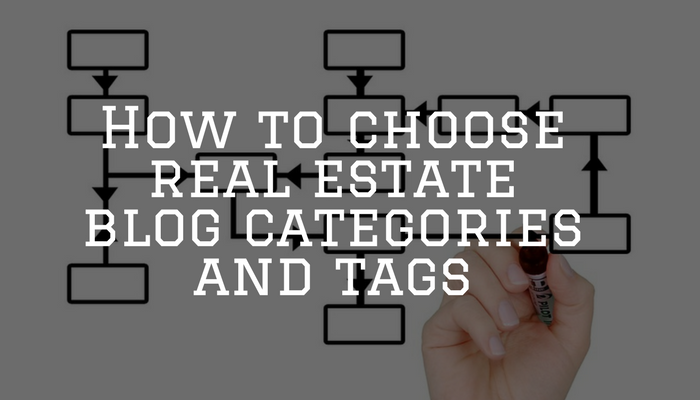
As a real estate professional, you would like to write content targeting different segments of your prospects and different types of properties they can buy or sell in your area. You will write content for home sellers, buyers, millennials etc. You will also write blogs on various types of properties including start-up homes and luxury villas. Have you ever wondered what happens if you don’t categorize each piece of your content on the basis of type of audience and property it addresses? Well, your real estate blog will be a total mess.
If you want to keep your blog nicely organized and easy for your readers to navigate through, you should educate yourself on ‘categories’ and ‘tags’.
Difference between category and tags
Categories and tags sound like they are the same thing, but there is a huge difference. A blog category is a broad topic targeting a specific segment of your prospects. For example ‘home selling’, ‘home buying’, ‘home financing’, ‘real estate news’, ‘real estate market trends’, ‘foreclosure’ are all different categories. Your category list is like the table of contents for your blog. Each category on your real estate blog can contain smaller, more defined topics. They are called ‘tags’. Within the category ‘home buying’, you can have different tags like ‘multifamily homes’, ‘start-up homes’, ‘credit score’, ‘buying around Christmas’ etc.
Organizing your content into categories and tags has many advantages:
- It helps each of your readers to quickly find the content that targets specifically him or her.
- It helps you with search engine optimization. You can use most important keywords when deciding the names of your category and tags. It also helps search engines understand and index your content in a better way.
- It helps you optimize your blog for more exposure and keep the content properly organized.
Here are some of the best practices for setting up ‘categories’ and ‘tags’ within a blog:
- Don’t have too many or too few categories. You should understand the parameters required for a topic to qualify for being assigned to a dedicated category. If you write a lot of content on a specific topic, you should turn it into a category.
- Categories and tags are not carved in stone. As your blog matures, do not be afraid to add a new category or tag whenever the need arises.
- Don’t place a blog post under too many categories.
- Make an audit of your real estate blog categories and tags on a regular basis. Remove outdated categories and tags. It won’t look good for a category to have just one blog post. If you have a lonely post sitting in a category, move it to a different category.
So these were some of the best practices you can follow to organize your real estate content using categories and tags.




